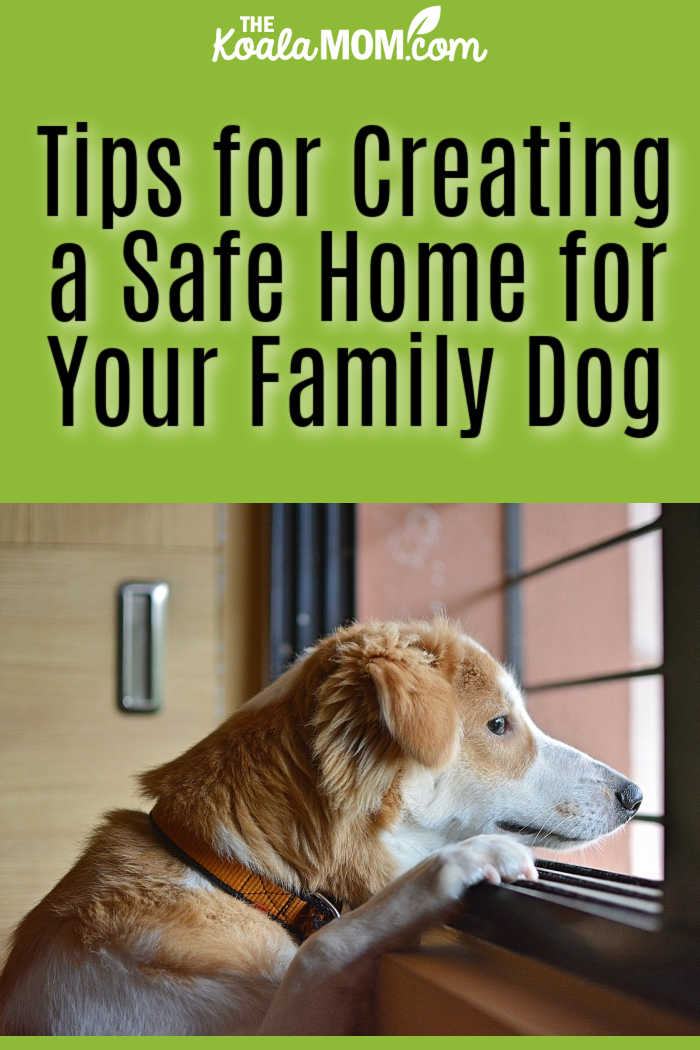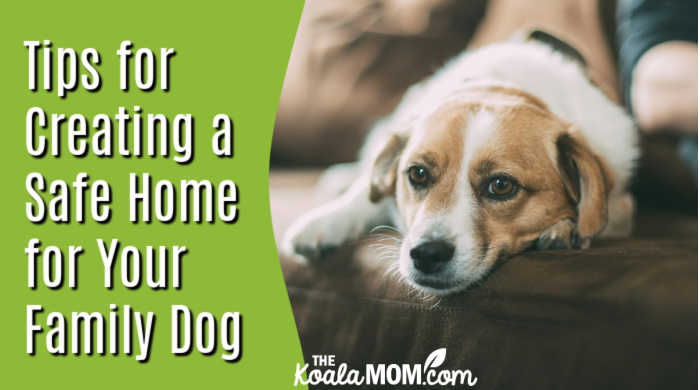Creating a safe and welcoming environment for your family dog is essential for their health, happiness, and well-being. Dogs are naturally curious, so taking preventive steps at home is the best way to avoid potential hazards and keep them safe. From selecting comfortable sleeping arrangements to organizing play spaces, thoughtful preparation can turn your home into a secure haven for your furry friend. Here’s a guide on how to set up a safe house that caters to your dog’s needs while giving you peace of mind.

Designate a Comfortable Sleeping Area
Providing your dog with a dedicated, cozy sleeping area can improve their comfort and security. A designated sleeping spot helps create structure and boundaries, which can reassure dogs. Look for a dog bed that fits your dog’s size and sleeping habits, providing enough space for them to stretch and curl up.
Soft, durable materials are preferable, providing a comfortable base for rest. Positioning the bed in a quiet area away from high-traffic zones will allow your dog to relax without distractions. Dogs appreciate routine, so keeping their sleeping spot consistent can add to their comfort.
Ensure Hazard-Free Kitchen Spaces
Kitchens can pose various risks for dogs, given the access to food, cleaning supplies, and sharp objects. Securing cabinets and clear countertops is essential to prevent your dog from accidentally ingesting harmful items. Childproof locks are an excellent solution to keep pets out of lower cabinets where cleaning agents and food are often stored.
Additionally, maintaining foods toxic to dogs, such as chocolate, grapes, and onions, in secure places is critical. For smaller dogs, placing barriers around kitchen zones can help limit access. Keeping the kitchen hazard-free is a step towards a safe environment for your pet.
Create a Safe Outdoor Area
If your home has an outdoor space, making it dog-friendly and secure should be a priority. Ensuring that fences are tall enough and free from gaps or broken panels can prevent your dog from escaping. Check the yard for plants that may be toxic to dogs, such as lilies, azaleas, and certain types of mushrooms, and remove them if necessary. Set up shaded areas where your dog can rest to avoid overheating, especially in warmer months.
For added safety, consider installing a lock on the gate to prevent accidental openings. Securing outdoor areas provides a safe, fun space for your dog to explore.
Organize a Play Zone with Appropriate Toys
Dogs are energetic and need both physical and mental stimulation. Creating a dedicated play zone in your home with suitable toys can help manage their energy and keep them entertained.
Select toys appropriate for your dog’s size and chewing habits to prevent choking hazards. Rotating toys periodically can keep them engaged, as dogs often get bored with the same items. Adding puzzle toys can stimulate their minds, reducing boredom that could lead to destructive behaviors.
Designating a play area gives your dog a safe space to unwind and enjoy their toys.
Store Hazardous Items Out of Reach
Household items such as medications, batteries, and certain cleaning products can be dangerous if ingested by dogs. Storing these items in high cabinets or rooms your dog cannot access is critical to preventing accidental poisoning. Be mindful of where you place everyday items like purses, backpacks, and remote controls, as they may contain or be powered by small, potentially toxic objects.
Additionally, putting safety latches on bathroom cabinets can add an extra layer of security. Being proactive about storage ensures your dog won’t accidentally access items that could harm them.
Install Pet Gates for Safety and Keep Electrical Outlets Covered
Pet gates are excellent tools for restricting your dog’s access to certain areas in the house. This can be particularly helpful if a young dog is still learning boundaries or you have rooms with valuable or delicate items. Gates can also benefit households with young children by separating pets and children’s play areas.
Choosing a tall, secure gate is essential, especially if you have a more giant or energetic dog. Adjustable, sturdy gates provide flexibility and prevent your dog from reaching unsafe areas in your home.
Electric cords and outlets pose a significant risk to dogs and inquisitive puppies who might chew on them. Cover exposed cords with protective sleeves and secure them out of reach to minimize risks. Additionally, using cord organizers or clips to manage bundles of wires keeps the area neat and reduces the chance of chewing. Outlet covers can also be used to prevent accidental contact with electrical sources. Keeping cords and outlets protected ensures a safer environment for your dog, reducing the potential for electric shock.

Creating a safe, comfortable environment for your dog is a thoughtful investment in their well-being and happiness. By organizing play areas, securing hazardous items, and dedicating a cozy sleeping space, you provide a home that caters to your pet’s needs.
Taking these preventive steps also gives you peace of mind, knowing that you’ve minimized risks and created a welcoming space for your furry friend. With some preparation, you can ensure your home is both a sanctuary and a playground for your beloved dog.

No Responses Yet